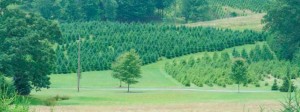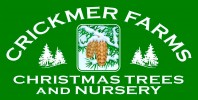Tree Info

Choosing and Caring For:
How Big a Tree Should I Buy?
How Do I Select a Clean, Fresh Tree?
Caring for the Tree Before It Goes in the House
Setting Up and Caring for the Tree
Taking Down the Tree
Disposing of the Tree
How Big a Tree Should I Buy?
And Should It Be Perfect?
The obvious answer to the question “How big a tree should I buy?” is to buy a tree that fits the space where it is to be set up. The key is to measure the height and width of the space where the tree is to be placed, and then measure – don’t estimate – the tree to be purchased.
Trees in a choose-and-cut field or tree lot always look smaller than they are. The last thing one wants is to get the tree home and discover that the height or, worse yet, the width of the tree must be significantly reduced. Not only is this an unplanned and usually an unpleasant chore, particularly in the house, but more often than not such trimming dramatically reduces the tree’s attractiveness. And don’t assume that just because a tree is the right height, it will be the right width. While many growers shear Christmas trees to an average taper of 66 percent, individual trees can differ considerably from that average. And the shape of the tree you need may be quite different from the average.
A better question than “Should the tree I buy be perfect?” is “Must the tree I buy be perfect on all four sides?” For some, the answer to that question will always be yes. They want as perfect a tree as they can find, irrespective of where it is to be displayed. For others, the answer will depend on where the tree is displayed. If the tree is to be displayed so that all four sides are visible, perhaps in a living room in front of a large window, then all four sides should be as good as possible. On the other hand, if the tree is to be displayed against a wall, a tree with three good sides may look perfect. If it is to be displayed in a corner, a tree with two good sides may look perfect. Why is this important? Because generally, the more perfect a tree is, the more expensive it is. It makes little sense economically to pay for more quality than you can see or appreciate.
How Do I Select a Clean, Fresh Tree?
Clean trees are trees that, in addition to being free from any extraneous plant material such as vines and grass, have been shaken to remove the dead needles that are lodged in the foliage and branches. Christmas tree needles do not live forever. Each year a new batch of needles develops and the oldest needles on the tree die. Some species, such as the spruces, may have four- or five-years’ growth of needles on the tree at any one time; other species, such as many of the pines, may have only one- or, at most, two-years’ growth of needles on the tree at any one time. A freshly cut, unshaken Christmas tree may have literally thousands of needles hanging in its crown. These needles should be shaken from the tree with a tree shaker.
A cut Christmas tree will last the entire holiday season without becoming excessively dry or dropping an excessive amount of needles provided it is fresh when purchased and it is given the proper care. Obviously, the most effective way to ensure a fresh tree is to visit a choose-and-cut plantation and cut the tree yourself. For many families this has become a holiday tradition, with the family devoting most or all of a day to choosing the “perfect” tree while enjoying the scenery and other activities provided by the grower.
For those selecting their Christmas tree at a retail lot, somewhat more care is needed to ensure that the tree selected is fresh. The most effective way for a buyer to evaluate the freshness of a cut Christmas tree is by how firmly the needles are attached to the branches. The easiest way to evaluate this is to lightly grasp a branch of the tree and gently pull the branch and needles through your hand. If the tree is fresh, very few needles will come off.
Another way to evaluate needle fastness is to shake or bounce the tree on the bottom of its trunk and observe needle drop. Again, if only a few green needles drop, the tree is probably fresh. When evaluating freshness, do not be concerned if excessive amounts of brown needles fall. Remember, these are the needles that the tree sheds each year. Just make sure the tree is shaken before it is taken into your home.
Other methods of assessing the freshness of a Christmas tree, including needle flexibility, tree color, aroma, and the relative dryness of the bottom of the trunk, are far more difficult to evaluate and can many times be very misleading.
Giving the Tree the Proper Care
The key to maintaining a fresh Christmas tree throughout the holiday season is giving the tree proper care from the time it is purchased until it is disposed of.
Caring for the Tree Before It Goes in the House
If possible, cover the tree with some type of tarp during transport to prevent it from drying out, particularly if it’s going to be on top of your car. A plastic tree disposal bag, available from many growers and lots, works well for protecting bailed trees during the trip home.
If the tree is to be kept for several days before being set up in the house, place it out of the direct sun and wind, perhaps on the north or east side of the house, behind some shrubbery, under an overhang, or in an unheated enclosed porch or garage.
If the tree is to be stored more than a couple of days, it is advisable to place its trunk in water. If the tree has been cut within the last six to eight hours, it will not need to be recut; longer than that and it should be recut. Cut straight across the trunk (not at an angle) removing an inch or more from the bottom of the trunk. Be sure the container holds enough water and replenish it often enough that the water does not fall below the level of the trunk bottom. If it does, the trunk will begin to seal, and water absorption will be reduced or cease. When this occurs, a fresh cut must be made to remove the sap seal. Cut Christmas trees will absorb a surprising amount of water, particularly during the first week. A tree with a two-inch diameter trunk may initially use two quarts of water per day; one with a four-inch diameter trunk may use more than four quarts per day.
Setting Up and Caring for the Tree
The lower the temperature and the higher the humidity, the longer a cut Christmas tree will last. If possible, turn down the temperature or close (at least partially) the heat vents in the room where the tree is located. If you have a humidifier, set it as high as feasible without causing condensation throughout the house. Some individuals who do not have whole-house humidifiers place a small portable humidifier in the room with the tree. Do not locate the tree near sources of heat such as a fireplace, an open heat duct, or a radiator, or in front of a window that receives the direct rays of the sun.
If the trunk has not been recut, recut it as described previously.
Consider using a tree disposal bag and place the bag around the base of the tree before it is put in the stand. A tree disposal bag is a large plastic bag that is pulled up over the entire tree at the end of the season to contain loose needles and branches as the tree is carried out of the house. To be effective, the tree bag must be placed around the base of the tree trunk before the tree is placed in the stand.
Place the tree in a stand that is large enough and strong enough to hold a tree of its size. Be sure that the tree stand will hold an adequate amount of water (most would suggest a one- gallon minimum; more for large trees) and that it is replenished on a daily basis. Water is important because it prevents the needles from drying out, becoming brittle, and dropping off; the branches from drooping and then becoming brittle; and it keeps the tree fragrant. Again, remember that the tree will absorb a large quantity of water, particularly during the first week, and it is essential that the water level in the stand never go below the cut end of the trunk or a seal of dried sap will form (in as little as four to six hours), preventing the tree from absorbing water. If this happens, a fresh cut will need to be made to remove the sap seal, a cut that is often not feasible with a fully decorated tree.
Use only approved and carefully inspected electrical lights and extension cords when decorating a Christmas tree. Do not leave a lighted Christmas tree unattended.
Taking Down the Tree
Take the tree down at the end of the season or when it has become too dry. A well-cared-for Christmas tree should normally remain fresh for the entire holiday season. Research has shown that fresh-cut Christmas trees of the most common species should last at least four weeks before drying to an unacceptable level. Some trees will last longer; others will dry out sooner. We have evaluated trees that were still acceptable after six weeks, and a few trees that took up very little water and began drying out immediately. Certainly a little judgment must be used in evaluating when to remove the tree.
Disposing of the Tree
After the holiday season, a Christmas tree can be disposed of in a variety of ways.
Many communities have curbside pick-up or drop-off locations for recycling or disposing of Christmas trees.
Christmas trees can be chipped and used for mulch or composted.
Christmas trees can be set up in your yard or garden as a shelter or feeder for birds or other wildlife. This is most commonly done by simply securing the tree in a standing position and hanging suet or other food in the foliage.
Christmas trees can be used as cover in fish ponds.
